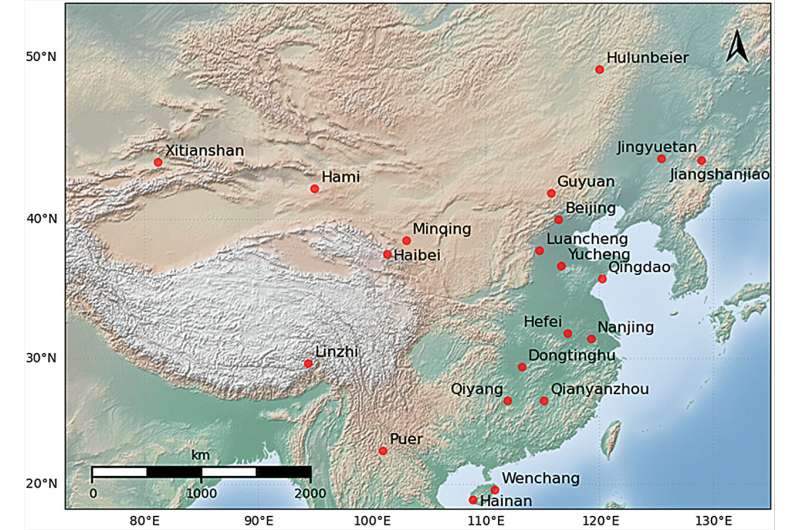This article has been reviewed according to Science X's editorial process and policies. Editors have highlighted the following attributes while ensuring the content's credibility:
fact-checked
trusted source
proofread
Study enhances validation of MERRA-2 aerosol optical thickness dataset in China

A new study published in Atmosphere on Oct. 23 has made advances in the validation of MERRA-2 Aerosol Optical Thickness dataset in China. The study was conducted by scientists from the Aerospace Information Research Institute (AIR) of the Chinese Academy of Sciences.
In the realm of climate studies, atmospheric modeling, air quality monitoring, and environmental research, the Modern-Era Retrospective Analysis for Research and Applications version 2 (MERRA-2) Aerosol Optical Thickness (AOT) dataset plays a pivotal role. This dataset combines information from multiple satellite instruments and numerical models, providing invaluable insights for scientists.
However, the validation of the MERRA-2 AOT dataset in China has been hindered due to the uneven and sparse distribution of the Aerosol Robotic Network (AERONET) in the region. To address this issue, the National Civil Space Infrastructure Satellite Aerosol Product Validation Network (SIAVNET) has been established to enhance the validation of the MERRA-2 AOT dataset in China.
The validation results from SIAVNET have unveiled insights into the accuracy of the MERRA-2 AOT dataset under different conditions. Notably, the dataset's accuracy is inversely related to the aerosol loading in the atmosphere. When the AOT is less than 1.0, the validation shows that the dataset maintains a relative high accuracy, with a slope reaching 0.712 and an R-squared value (R2) of 0.584. It is worth noting that the percentage of data pairs meeting the Global Climate Observing System (GCOS) minimum requirement is less than 60%, highlighting the need for improvements.
Research has revealed that the quality of MERRA-2's AOT simulation varies by altitude and season in China. Specifically, MERRA-2 demonstrates lower simulation quality at high altitudes compared to low altitudes. Additionally, the quality of AOT simulation is found to be season-dependent, with the worst performance occurring during the spring season. However, the simulation quality is gradually improved in the following seasons, with the highest quality observed in winter. The low simulation quality in spring may be caused by the presence of dust aerosol.
The validation efforts facilitated by SIAVNET are essential for strengthening the reliability of the MERRA-2 AOT dataset in China. Scientists can better understand the dataset's limitations, especially in regions with varying aerosol loading and altitude, and the dataset's seasonal variations. These insights will contribute to accurate climate studies, atmospheric modeling, air quality monitoring, and environmental research in the region.
More information: Shuaiyi Shi et al, Validation of MERRA-2 AOT Modeling Data over China Using SIAVNET Measurement, Atmosphere (2023). DOI: 10.3390/atmos14101592
Provided by Chinese Academy of Sciences





















